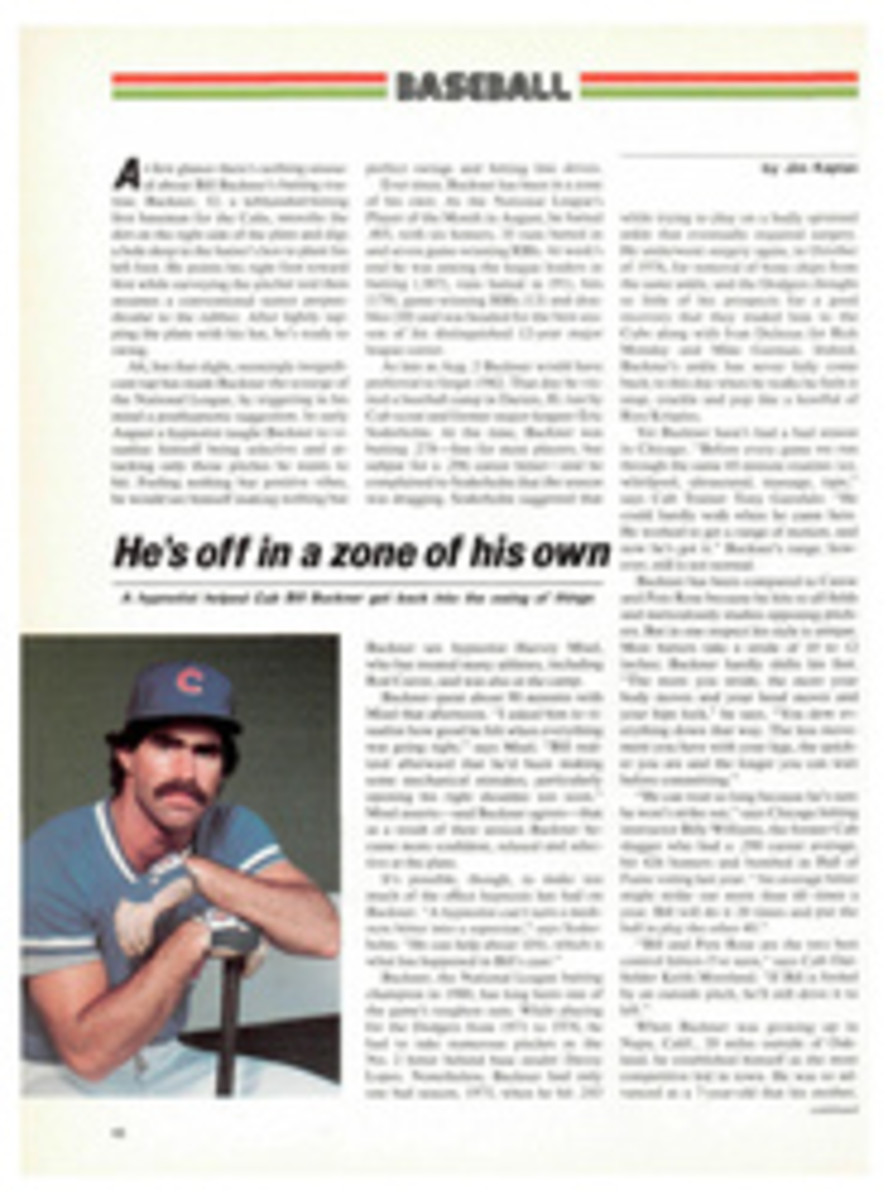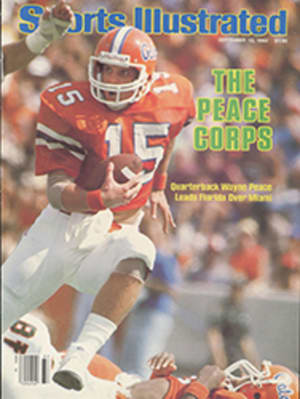
Summer school for the NBA
The NBA centers and power forwards standing single file along the baseline in the gym at Loyola Marymount University in Los Angeles last month had at least two things in common: Every one was talented, yet few were sufficiently skilled to excel in the pros. Which is why all eyes and ears were intent upon the top of the key and the soft-spoken, silver-haired man who some experts think has the greenest thumb in basketball.
This tiller of men was Pete Newell, 67, a consultant to the Golden State Warriors and one of the finest basketball minds extant. The goings-on at Loyola Marymount were an outgrowth of one-on-one skull sessions Newell had held seven years ago with an awkward neophyte forward named Kermit Washington. Now Newell's "camp" is the place to be for instruction on balance, timing, footwork and other nuances of the frontcourt game.
The 16 players who attended this year's two-week camp comprised Newell's largest class ever. Bill Walton stopped by, but it was mainly young bucks (and Kings and Trail Blazers) who came to Newell for help. The session attracted players from eight NBA teams—for example, Rickey Brown of the Warriors—as well as New Jersey Player Personnel Director Al Menendez, coaches Al Attles of Golden State and Stan Albeck of San Antonio and Portland Assistant Coach Jim Lynam.
"There are a lot of paintings but only one Mona Lisa," Menendez says. "With other coaches something gets lost before it gets to the canvas."
"Pro coaches just don't have enough time to do the things that Pete does," Albeck says. "This fall we'll start training camp on October first, and our first exhibition will be about a week later, with the first regular season game on the 29th. If we spent two and a half hours the first day working on footwork, there wouldn't be time to get to everything else."
After 21 years of college coaching, including a national championship at Cal in 1959 and guiding the U.S. Olympic team to the gold medal in 1960, Newell has no illusions about how much one man can teach players with bad or no habits. "Players today are overcoached and undertaught," Newell says. "Many NBA coaches have come into coaching straight from playing, and they're not into teaching. The old NBA wasn't exactly a coaching-teaching league, either."
What Newell does isn't very innovative, just repetitive. Old habits are uprooted, new ones are planted. "Everything is based on movement, and that comes from the feet," Newell says. "If you played 48 minutes you would handle the ball for only about four minutes total but you're on your feet the entire time."
According to Newell, a player has a dominant foot, just as he has a dominant hand. Therefore, each drill is done on both sides of the court, switching pivot and take-off feet. Sounds simple, but it's not. For many players, the camp represents the first time they've been asked to adopt an intellectual approach to the game: why this move will elicit that reaction. And some things that Newell teaches, like the reverse spin, may be commonplace to guards; however, they're new to big men.
Just ask Denver's Kiki Vandeweghe, who's been attending Newell's camp since 1976, before his first season at UCLA, which made him, with the recent retirement of Washington, the senior student of this year's class. Though Vandeweghe became an All-America at UCLA, he was supposedly too slow to make it in the pros. But last year, in his first full NBA season, he averaged 21.5 points a game.
"Kiki's like a junkball pitcher in a world of Nolan Ryans," Menendez says. "He knows how to get from there to there on offense, and it's because of Newell. Now if you taught those things to someone with superior physical abilities, he'd be on another level."
Vandeweghe is used by Newell as a model. In fact, many moves Newell teaches are based on Vandeweghe's shoulder-dipping, step-back jump shot. Although it looks like vintage Archie Clark Shake 'n Bake, during the camp Newell barked, "Give us a Kiki move left." "He's still calling it that?" another player asked. "I'm so embarrassed," Vandeweghe said with a grimace.
"Larry Bird and Magic Johnson were also a couple of players who were thought to be perhaps too slow," Newell says. "It makes me wonder how important speed really is. Kiki surprised some people but not me. After he'd gone against people like Kermit and Kenny Carr here for five years, I knew there'd be no one he had to fear in the NBA."
"When I first came here," Vandeweghe said, "I'd try things that sounded simple and I'd get confused, but now every game I do something that we went through here."
Kansas City's Steve Johnson is perhaps the next best practitioner of Vandeweghe's move. "You've got to use that move next year; I don't know why you didn't last season," Newell said during one workout. "I wanted to, but Cotton wouldn't let me," Johnson replied. Cotton is Kings Coach Cotton Fitzsimmons, which brings up an interesting point. Do coaches on other teams mind Newell's putting perhaps subversive ideas into their players' heads?
"I think the coaches all realize that their guys will only get better by being here," Attles said.
The players pay no fee and Newell gets no stipend. So why does he do this? "Why does a painter paint? It's like that court is his canvas and each part of a player's development is another stroke on it," says Newell's son Tom. "He was born to teach. It's his first love. I think even my mother would agree to that."
It's hard to imagine Newell not directly involved in basketball, which he gave up on a full-time basis when he retired as general manager of the Lakers after the 1975-76 season. "I felt it was time to get out," he says. "There was an awful lot of gardening to do."
For a year Newell puttered in his garden and the TV booth as a commentator on Pac-10 basketball games. That summer he got a call from Washington, who almost begged for help.
"I was with the Lakers then," Washington says. "Bill Sharman was the coach, but his wife and father had died, and the team was going poorly, so he didn't have a lot of free time. I was tired of sitting on the bench and wondering if I was ever going to make it, so I called Pete.
"At first I think he thought I was brownnosing or trying to be a goody two shoes so he'd try to kill me in the drills."
Soon the number of campers increased to four with the addition of Vandeweghe, Carr and then Laker Gail Goodrich, one of the few guards ever to attend Newell's sessions. "I thought I was going to die out there," Washington says. "We'd run drill after drill. People would leave the court, throw up and come back on the court for more. Pete was there out of the goodness of his heart, so you weren't going to tell him you were tired. Instead, you'd just go home and die."
PHOTO

